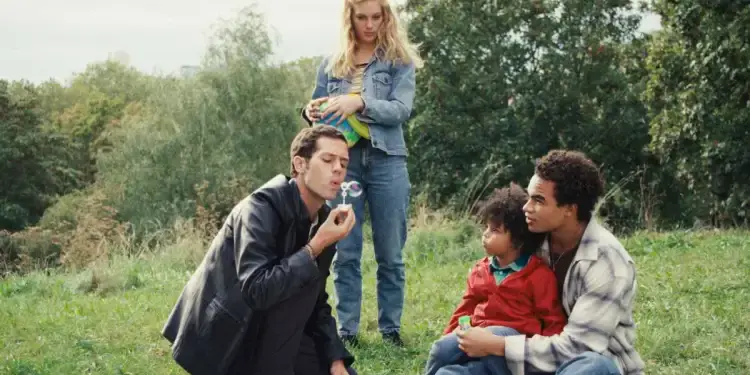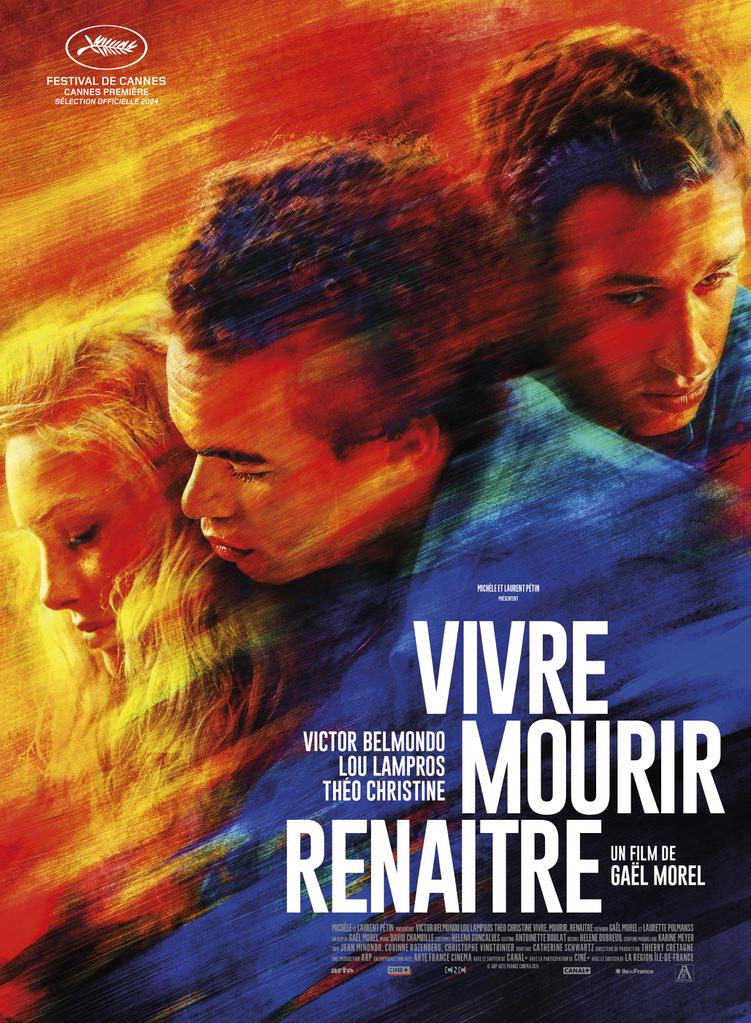The Cannes Film Festival, in this 77th edition which is held from May 14 to 25, is marked by the presentation of a deeply touching film: Live, die, be reborn de Gaël Morel. This film, screened in the “Cannes Premier” section, delicately addresses a dark period marked by the appearance of a devastating disease which particularly affected the Gay community in the 1980s and 1990s. However, Gaël Morel chooses to transcend the simple story of the epidemic to offer a story of love and friendship imbued with humanity.
Discovered at the Cannes Film Festival as an actor in Wild reeds In 1994, Gaël Morel returned this time as a director with a deeply personal and moving film.
The intrigue takes place in Paris in the early 1990s, where Emma (Lou Lampros) and Sammy (Théo Christine) form a loving and accomplice couple. Their relationship, marked by a great open -mindedness, allows Sammy, bisexual, to share his past experiences with men without arouse jealousy in Emma, who finds this facet of her exciting partner. Together, they decide to start a family and give birth to Nathan, their son, who becomes the center of their life.
A turning point occurs when Sammy meets their neighbor’s neighbor, Cyril (Victor Belmondo). Working on a series of Portraits Santa Claus, Cyril and Sammy quickly develop a relationship that goes beyond the professional framework to become a love story. Emma, although disturbed by this new dynamic, decides to accept it but does not want to know anything about their affair. Gaël Morel then finely digs these two relationships, without any question of a three -house cleaning.
The fragile harmony of the trio is put to the test by the reality of AIDS. Cyril, HIV positive for years, has integrated the disease into his daily life and even says that it has improved his work as a photographer. For Sammy, the situation is more tragic: not having taken the necessary precautions, he discovers that he is HIV positive before even meeting Cyril and contaminated Emma. Fortunately, their son Nathan is spared, but fear and uncertainty invade their daily lives.
Live, die, be reborn Affects with finesse the themes of love, friendship, illness and resilience. The film offers a unique perspective on the impact of the disease on the family and the community. Witness to the tests of his parents, Nathan becomes a symbol of continuity and hope for the future.
The second half of the film, more introspective, focuses on the management of imminent death and the possibility of healing. How to live under the constant threat of AIDS? How to consider the future and maintain emotional and friendly relationships in such a context? Gaël Morel treats these questions sober and depth, integrating Nathan as a central character to relaunch the story and prepare the ground for the future.
This film is a powerful testimony to the human capacity to overcome the worst trials and find reasons to live and love, even in the darkest moments. Gaël Morel reminds us that love, friendship and resilience can help us to be reborn and build a better future.
Live, die, be reborn is not limited to portraying the AIDS crisis in a dark way. Gaël Morel prefers to explore the complex and nuanced dynamics of human relations. The film avoids the pictures of the love triangle; Each relationship is unique and treated with remarkable subtlety. Same for the relationship between Emma and Cyril when Sammy died, and the relationship that Cyril will tie with Nathan. The characters of Sammy, Emma and Cyril are finely chiseled, making this story deeply touching.
Morel’s staging is impressive. The plans are beautifully composed, capturing a vitality and a beauty that reflect the spirit of the time. Happiness, even under the threat of illness, remains omnipresent, and the film celebrates love, friendship and joy of life.
The performances of the actors are remarkable, all in sensitivity. Lou Lampros shines in the role of Emma, bringing great emotional depth to his character. Théo Christine embodies a vibrant and solar sammy, while Victor Belmondo, in Cyril, moved by his sweetness and vulnerability.
Live, die, be reborn is much more than just a story on the impact of AIDS. It is a deep reflection on human resilience, love and friendship in the face of adversity. Thanks to a careful staging and the performances of poignant actors, Gaël Morel offers a moving and inspiring film that celebrates the ability of humanity to be reborn even in the darkest moments.
Neïla Driss










